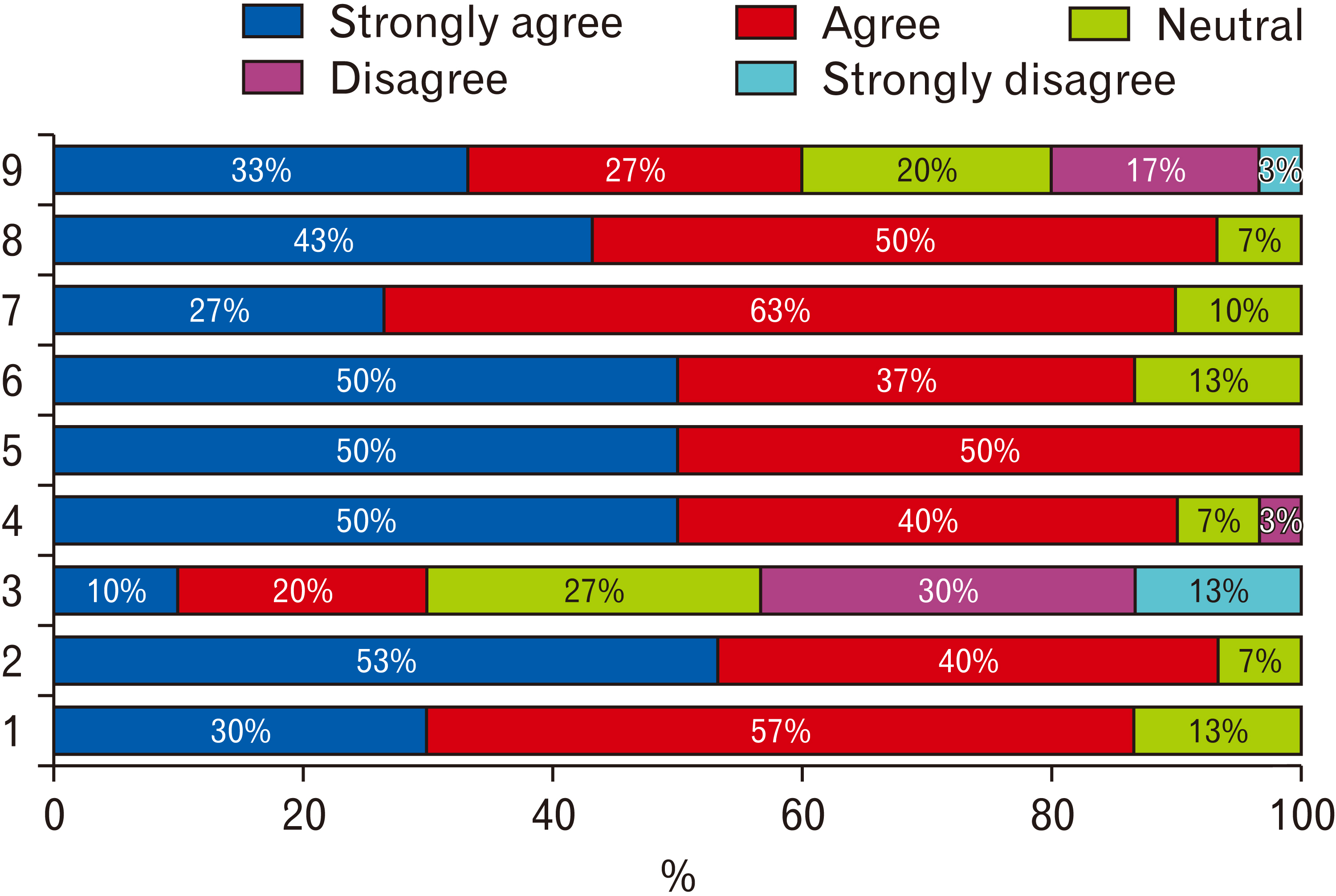Anat Cell Biol.
2022 Dec;55(4):452-458. 10.5115/acb.22.122.
Student Team Achievement Division as a tool for peer assisted co-operative learning in neuroanatomy
- Affiliations
-
- 1Department of Anatomy, All India Institute of Medical Sciences, Bibinagar, India
- KMID: 2537464
- DOI: http://doi.org/10.5115/acb.22.122
Abstract
- Student Team Achievement Division (STAD) is a co-operative learning approach premised on a group learning activity that emphazises learning as a social exchange of knowledge between students, in which each student is accountable for his or her own learning and is also encouraged to assist others in achieving their goals. It promotes the cognitive, psychomotor, and emotional growth of students involved in the team. By random sequencing, 60 participants were allocated to interventional group (n=30) and control group (n=30). The participants of the interventional group were subjected to STAD strategy and participants of the control group were instructed to do a conventional self learning on the ventricles of brain. The outcomes were statistically analysed. It was found that the performance of the students is far better with STAD approach than conventional self learning. Our study has shown that Students team Achievement Division can be used as an effective tool for Peer assisted Co-operative Learning in Anatomy. Further studies can be done to investigate the contribution of STAD to teaching other disciplines of Anatomy and other basic medical sciences.
Figure
Reference
-
References
1. Simpson V, Oliver M. 2007; Electronic voting systems for lectures then and now: a comparison of research and practice. Aust J Educ Technol. 23:187–208. DOI: 10.14742/ajet.1264.2. Bugaj TJ, Blohm M, Schmid C, Koehl N, Huber J, Huhn D, Herzog W, Krautter M, Nikendei C. 2019; Peer-assisted learning (PAL): skills lab tutors' experiences and motivation. BMC Med Educ. 19:353. DOI: 10.1186/s12909-019-1760-2. PMID: 31521146. PMCID: PMC6744669. PMID: be45be207e774acfb3992687a4ee162c.3. Guraya SY, Abdalla ME. 2020; Determining the effectiveness of peer-assisted learning in medical education: a systematic review and meta-analysis. J Taibah Univ Med Sci. 15:177–84. DOI: 10.1016/j.jtumed.2020.05.002. PMID: 32647511. PMCID: PMC7336023.4. Fantuzzo JW, Dimeff LA, Fox SL. 1989; Reciprocal peer tutoring: a multimodal assessment of effectiveness with college students. Teach Psychol. 16:133–5. DOI: 10.1207/s15328023top1603_8.5. Drew C. 2019. Peer to peer learning - examples, benefits & strategies [Internet]. Helpful Professor;Available from: https://helpfulprofessor.com/peer-learning/. cited 2022 May 9.6. Jonassen DH. 1991; Evaluating constructivistic learning. Educ Technol. 31:28–33.7. Glynn LG, MacFarlane A, Kelly M, Cantillon P, Murphy AW. 2006; Helping each other to learn--a process evaluation of peer assisted learning. BMC Med Educ. 6:18. DOI: 10.1186/1472-6920-6-18. PMID: 16524464. PMCID: PMC1458341.8. Rawung IY. 2017; The use of stad model in teaching English. sintuwumarosoJET. 3:7–12.9. Borg WR, Gall JP, Gall MD. 2005. Applying educational research: a practical guide. 5th ed. Pearson Education;London:10. Newman HM. 1982; The sounds of silence in communicative encounters. Commun Q. 30:142–9. DOI: 10.1080/01463378209369441.11. Slavin R. Mayer RE, Alexander PA, editors. 2011. Instruction based on cooperative learning. Handbook of Research on Learning and Instruction. Routledge;New York: p. 1–21. DOI: 10.4324/9780203839089-26.12. Ishtiaq M, Hussain MS. 2017; Scope of Cooperative Learning (CL) strategies in teaching English to Saudi adult EFL learners: a study of practical barriers and possible implications. Int J Appl Linguistics English Lit. 6:110–21. DOI: 10.7575/aiac.ijalel.v.6n.7p.110.13. Madden NA, Slavin RE. 1983; Mainstreaming students with mild handicaps: academic and social outcomes. Rev Educ Res. 53:519–69. DOI: 10.3102/00346543053004519.14. Keramati M. 2010; Effect of cooperative learning on academic achievement of physics course. J Comput Math Sci Teach. 29:155–73.15. Yu FY. 1998; The effects of cooperation with inter-group competition on performance and attitudes in a computer-assisted science instruction. J Comput Math Sci Teach. 17:381–95.16. Johnson DW, Johnson RT, Smith KA. 1998; Cooperative learning returns to college what evidence is there that it works? Change Mag High Learn. 30:26–35. DOI: 10.1080/00091389809602629.17. Pandya S. 2017; Understanding students' opinion on co-operative learning implementation in mathematics. Eur J Educ Stud. 3:132–53.
- Full Text Links
- Actions
-
Cited
- CITED
-
- Close
- Share
- Similar articles
-
- Utilization and Effects of Peer‐Assisted Learning in Basic Medical Education
- Methods of Effective Team-Based Learning Administration and Expected Effects on Medical Education
- Reconsidering the Concept and Potential of Learning by Teaching
- Assessment of students' satisfaction with a student-led team-based learning course
- Effects of Blended Learning on Pharmacy Student Learning Satisfaction and Learning Platform Preferences in a Team-based Learning Pharmacy Experiential Course: A Pilot Study




